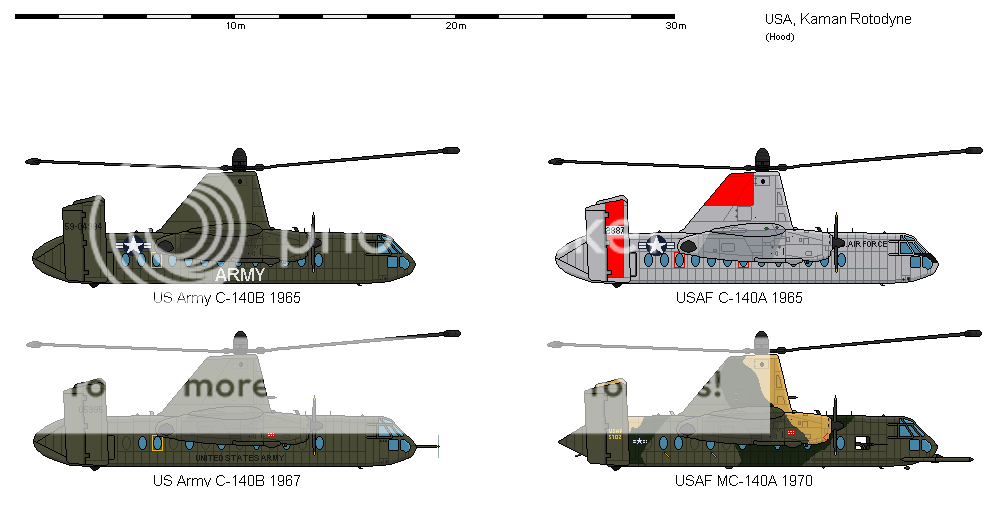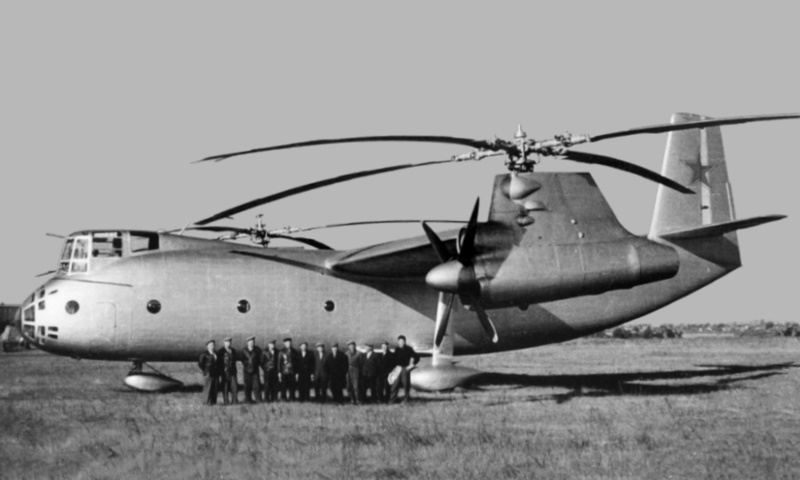You are using an out of date browser. It may not display this or other websites correctly.
You should upgrade or use an alternative browser.
You should upgrade or use an alternative browser.
No MV22 Osprey
- Thread starter Riain
- Start date
If The USA could get past the NIH syndrome than I would advocate the Marines get these. https://en.wikipedia.org/wiki/Canadair_CL-84
Riain
Banned
No Apache or Huey Cobra could replace the Harrier, and no superized CH-46 can replace the Osprey, if an Osprey is what you can afford. If you want an apple, a really good orange is just an orange.
The Marines are using the AH1Z instead of the Apache and the UH1Y instead of the Blackhawk. I'm suggesting that they use a CH46X with 2000+ hp engines and the like.

Last edited:
Short version is two of the three were experimental test models, & all three reflected 1960s tech details. Another perspective is their technology evolved into the Osprey & similar aircraft of its generation.
Absent a Osprey development program the USMC is free to commit the money to other replacements for the CH46. This was a often proposed & discussed option & a search through the professional literature of the 1970s thro 1990s the aviation industry periodicals, Marine Crops Gazette, or Naval Institute Proceedings will show many of the arguments and examples for this.
So, absent eh MV22 of similar aircraft the Marines and a few others would be flying a CH XX Medium. Something reflecting the helicopter technology of the 1980s or 1990s; with more speed, range, and robust than the CH46 or existing equivalents.
Driftless
Donor
More from the NIH file that might have worked with further development:
Fairey Rotodyne (you knew that was coming, didn't you?)
Dornier Do.31
Many folks complain about the very large cost and the performance of this type of VTOL transport aircraft, but different designers have been working on the idea for over half a century. In hindsight, maybe go with production earlier and refine as you go.
Fairey Rotodyne (you knew that was coming, didn't you?)
Dornier Do.31
Many folks complain about the very large cost and the performance of this type of VTOL transport aircraft, but different designers have been working on the idea for over half a century. In hindsight, maybe go with production earlier and refine as you go.
Riain
Banned
Short version is two of the three were experimental test models, & all three reflected 1960s tech details. Another perspective is their technology evolved into the Osprey & similar aircraft of its generation.
Absent a Osprey development program the USMC is free to commit the money to other replacements for the CH46. This was a often proposed & discussed option & a search through the professional literature of the 1970s thro 1990s the aviation industry periodicals, Marine Crops Gazette, or Naval Institute Proceedings will show many of the arguments and examples for this.
So, absent eh MV22 of similar aircraft the Marines and a few others would be flying a CH XX Medium. Something reflecting the helicopter technology of the 1980s or 1990s; with more speed, range, and robust than the CH46 or existing equivalents.
What US helicopters are out there in the 70s and 80s that suit USMC needs? Keep in mind that USMC gear tends to carry twice as many men as US Army gear: M113, UH1 and Blackhawk carry 11-12 men and the Bradley 6, but the AAAV7, CH46, MV22 carry 21-24 men and the mooted EFV and ACV carry 17.

Sior
Banned
More from the NIH file that might have worked with further development:
Fairey Rotodyne (you knew that was coming, didn't you?)
Dornier Do.31
Many folks complain about the very large cost and the performance of this type of VTOL transport aircraft, but different designers have been working on the idea for over half a century. In hindsight, maybe go with production earlier and refine as you go.

http://www.shipbucket.com/forums/viewtopic.php?f=20&t=1510
Though tiltrotors can fly higher and faster, rotodynes’ greater lifting potential and lower operating costs arguably make them superior strategic assets.
Design Features:
- The rotor mast, engines and landing gear are housed in external pods to increase cargo space. Streamlining reduces drag and extra armour can be fitted in high-risk environments.
- The twin turboshafts are linked by cams so both propellers will keep spinning if either engine fails. Power can be transferred to the main rotor for VTOL and hovering; no tail rotor is needed as prop pitch provides yaw control.
- Full power is applied to the props while the main rotor autorotates during high speed level flight. The stub wings and tailplanes provide extra lift while the twin rudders behind the props allow tighter turns than usual for an aircraft of this size.
- Rotodynes are generally much stronger and safer than tiltrotors. The engines do not have to tilt, so construction is simpler; there is no danger of tilting nacelles being jammed in one position; and losing a camshaft along with an engine is less likely to be fatal. Rotodynes’ large main rotors allow more efficient hovering and are harder to stall during fast descents. Their less concentrated rotor wash makes parachute drops easier and their exhaust is less likely to cause damage during takeoff and landing as it is not projected downwards.
Last edited:
Driftless
Donor
The Rotodyne seems like any early solution to a problem. The Not-Made-Here issue would need to be finessed out of the way - like they did with the later Harrier.
What would a 1990's, or 2000's descendant of that early Rotodyne look like? Different engines certainly, but basic layout?
What would a 1990's, or 2000's descendant of that early Rotodyne look like? Different engines certainly, but basic layout?
The Rotodyne seems like any early solution to a problem. The Not-Made-Here issue would need to be finessed out of the way - like they did with the later Harrier.
What would a 1990's, or 2000's descendant of that early Rotodyne look like? Different engines certainly, but basic layout?
And the LAV-25 (another system used by the USMC). Frankly, I think if you are talking about a system the Marines will use the NIH syndrome probably applies less because the Marines are so often at the bottom of the procurement food chain. They'll take what they can get.
Sior
Banned
The Rotodyne seems like any early solution to a problem. The Not-Made-Here issue would need to be finessed out of the way - like they did with the later Harrier.
What would a 1990's, or 2000's descendant of that early Rotodyne look like? Different engines certainly, but basic layout?

or this
CFH-18A Ultra Roc Super heavy lift Rotodyne

Engines: 4x CFPW A5249 Turbines rated at 5120kw (6866HP)
Cruise Speed: 300mph/480kph
Range: 2900km
Weight: 37680kg (empty), 94,200 (Max)
Length: 42.6m
Rotor Span: 59.7m
Height: 12.3m
Crew: 3 (pilot, co pilot, load master/crew chief).
Load: 110 passengers, 60 stretchers or 32028kg of internal cargo
Cargo hold dimensions:
Length (excluding ramp): 16.5m
Ramp: 5.4m
Width:4m
Height:4.2m
Equipment:
Basic: Full day/night/all weather cockpit, terrain avoidance and height indicator radar, digital Coms/data link system, GPS and internal navigation system with full auto pilot and automated landing approach system.
Survivability: light kevlar and composite armour panels over engine, cockpit and main hold, Laser and radar threat warning receivers, missile launch warning receiver, chaff/flare dispenser and DMSCM (Directed Multi Spectral Counter Measures) system (combo IR and EO “jammer”).
Optional equipment: Air to air refuelling probe, towed radar decoy
Last edited:
The official military designation of the CL-84 was CX-131, so being an experimental model isn't a drag at this stage.Short version is two of the three were experimental test models, & all three reflected 1960s tech details. Another perspective is their technology evolved into the Osprey & similar aircraft of its generation.
I'd also question the viability of a helicopter replacement for the MV-22, most helicopters are limited in top speed, with many not getting much over 200 mph, while the MV-22 can make a bit over 300 mph at sea level or about 350 mph at altitude, plus it has a greater ceiling.
Last edited:
Riain
Banned
The official military designation of the CL-84 was CX-131, so being an experimental model isn't a drag at this stage.
I'd also question the viability of a helicopter replacement for the MV-22, most helicopters are limited in top speed, with many not getting much over 200 mph, while the MV-22 can make a bit over 300 mph at sea level or about 350 mph at altitude, plus it has a greater ceiling.
And for that there has been massive cost and schedule overruns during development, a unit price of at least double that of a CH53E and a very hefty through life maintenance cost.
What could the USMC have bought with the $27 billion spent on Osprey development to 2008, let alone billions more for production.
What US helicopters are out there in the 70s and 80s that suit USMC needs? Keep in mind that USMC gear tends to carry twice as many men as US Army gear: M113, UH1 and Blackhawk carry 11-12 men and the Bradley 6, but the AAAV7, CH46, MV22 carry 21-24 men and the mooted EFV and ACV carry 17.
The USMC already had a heavy lift helo. What was wanted was a medium lift vehicle. More robust & better ranged than the overaged CH46. If you trace back through the literature the requirement leads around to a new aircraft, or something existing so heavily modified it may as well be new. The MV22 was one route to this. A completely new helo design to achieve the capacity and range requirements was looking like the most likely alternative. That was certainly the most attractive in economic terms. The MV22 certainly has capability, but the USMC had to give up bits of many other important things to pay for it. ie: a modern cutting edge attack helo. The aged AH1 Cobra design is still used. The many upgrades are useful, but of declining value in the 21st Century.
NIH = Not Invented Here!.
Ie, the unwillingness to adopt or take aboard any idea, technology or hardware that is not indiginous to your country.
Ie, the unwillingness to adopt or take aboard any idea, technology or hardware that is not indiginous to your country.
Driftless
Donor
NIH = Not Invented Here!.
Ie, the unwillingness to adopt or take aboard any idea, technology or hardware that is not indiginous to your country.
I think you can also add: even if it's clearly better than anything currently homegrown....
Share: